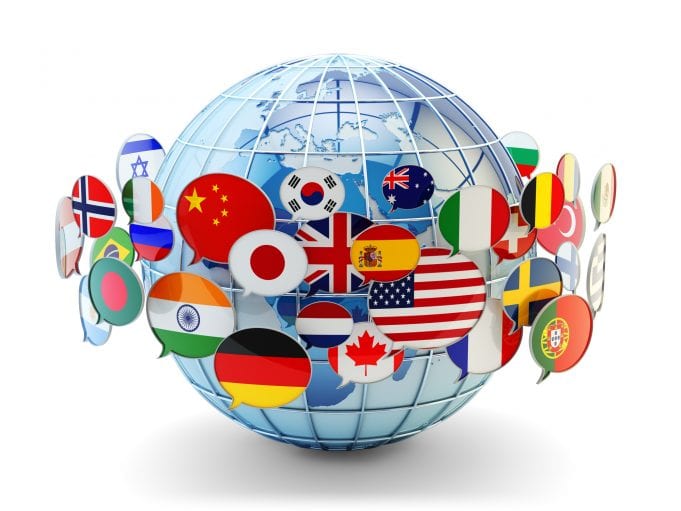Marketing is heavily reliant on the creative use of language and images. But in a multilingual global economy, where businesses are often trying to reach multiple demographics all over the world, language becomes even more important. In this article, we’ll cover how to drive up profits with language in mind, with ideas centered around multilingual content marketing, transcreation, and social media marketing in tandem with translation services.
Use Multilingual Content Marketing as Part of Translation Services

Content marketing takes on a host of new challenges when considered from a multilingual standpoint. What is content in content marketing? It is any type of content that enables a connection between your brand and your audience. Multilingual content marketing, meanwhile, involves tailoring your message across several different locales using translation and localization. There are several key points to keep in mind while working on a multilingual content marketing strategy.
First, make sure you understand the local cultural traditions of the areas you want to expand your business into. It pays to know about different cultures around the world so that you know how to fit your marketing message into them and can tailor language and images appropriately.
For instance, in India and China brides dress in red, rather than the white dresses commonly worn in many Western cultures. If you’re making a marketing message involving weddings, it pays to know cultural background information like this in order to respect local traditions and better connect with your audience. You can read more here about traditions around the world. Translation services can also help you understand these customs.
You should also make sure the language itself is easy to translate, which can save on costs with translation services. Some of the ways to make language easy to translate include:
- Get rid of cultural idioms, like “piece of cake” and “break a leg.” It can be hard to translate into other cultures that don’t have the figurative context behind those phrases.
- Watch out for local jokes, like referencing a local politician.
- Over-complicated language with long words and sentences can be tricky for translation services to handle, so avoid it if you can.
- Also avoid phrasal verbs, which are verbs combined with another element, like break down, turn down, run into, and sit up. These can be hard to translate into other grammatical frameworks.
In addition, keep an eye on the marketing strategy itself so that your translation company can easily understand and work within it. Remember, too, that certain common marketing methods, such as using a well-known celebrity spokesperson, tend to work in one location only.
For instance, if you have a spokesperson who is a well-known athlete in your part of the world, you’d have to re-do the entire ad for it to play in another location where that celebrity is unknown. You might even have to find a whole new spokesperson as you localize and invest in a heavily modified script, which can get expensive quickly.
Invest in Transcreation Services Along with Translation Services

Tailoring your message doesn’t simply stop at getting the language itself handled by a translation agency. There are also transcreation services, which handle the marketing message on a much more comprehensive scale.
Why is transcreation important? Transcreation is a must for marketing messages because it helps adapt the advertising and marketing copy so that it works with a local audience. This can involve making sure taglines, entire websites and slogans still resonate with oversea audiences in a way that still maintains the core marketing message. This often includes making sure the message fits in with idioms, slang, and cultures of local audiences.
This type of service requires deep knowledge of the local culture, which is why it’s important to source professional transcreation services, in addition to translation services. Often, a translation company may combine transcreation services and language translation services, so it’s important to talk about these needs with your chosen agency. With this, to help you find high quality, on-demand interpretation, and translation language services in support of small and large businesses you can visit: https://cantalk.com/.
Social Media Marketing and Human Translation

Since so many brands are active on social media, to the point where it has become something of a modern business sin to not have some type of social presence, the language you use on social media can make or break your brand message. Some language tips for using social media for marketing include:
- Make sure your marketing message is tailored to each social media service. For instance, Instagram is more image-based, whereas Twitter is text-based.
- Keep posts short and language simple. Social media sites are built for fast scrolling, so no one wants to read a complicated novel or a post.
- Catchy titles and captions can help people follow the links you post.
- If the site allows it, use photos and videos as much as possible. These grab the eye much better than text alone and can help accent the message that your copy delivers.
- Question posts are a common way to grab attention as well. Ask for opinions or answers to make your posts more interactive. This creates a dialogue, rather than just demanding that someone purchase something.
You might notice the theme of many of these tips is that you’re not just blasting out a traditional marketing message across all platforms. No one likes feeling that they’re being “marketed at” on social media, so your posts need to be engaging, helpful and interactive. Professional translators and transcreation professionals can help with that in any language.
Localized Translation: Social Media in a Bilingual Environment

If you plan to use social media in several different markets, then you need to build your social media posts with this first and foremost in mind. Some tips for making social media posts resonate across different locales include:
- Know which social media platform is the most popular in each location and the language for each. Use Qzone in China, for instance, and Facebook in the UK.
- Don’t rely on machine translation. It can lead to hundreds of translation errors, each of which has the potential to harm your brand. Invest in human translation services or a proficient translator for social media messages, too.
- Use filters based on languages and geographic settings. These often help messages only show to the correct demographic.
People on social media can tell when a message looks foreign and out-of-touch. Poor translations can even make a product look like a scam, so make sure your message is on-point and organic-sounding across all social media platforms by using professional human translation.









